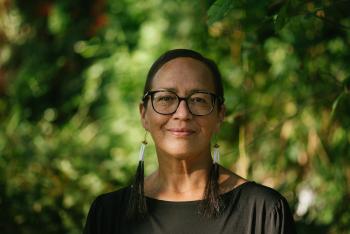Image Caption
Summary
Local Journalism Initiative Reporter
Windspeaker.com
The First Nation Health Authority in British Columbia has partnered with the national Health Standards Organization to develop a guide of behaviours and expectation of quality as the professional benchmark for cultural safety and humility in healthcare.
The result is a first-of-its-kind Cultural Safety and Humility Standard (CSHS) to be used as a tool to end Indigenous-specific racism in the BC healthcare system.
This partnership began in 2018, said Dr. Nel Wieman, (Anishinaabe), the deputy chief medical officer at FNHA. She co-chaired the technical committee that created the new CSHS standard.
The work began two years before the In Plain Sight report, which documented widespread racism in BC's healthcare system toward indigenous people.
“Indigenous-specific racism in BC’s healthcare system is long-standing and pervasive and its ongoing presence continues to have harmful impacts on the overall health and wellbeing of BC First Nations people today,” reads a FNHA press release announcing the standard.
For this reason, First Nations health professionals, with input from community chiefs, led the development of the new standard.
“Most importantly, we included the voices of patients,” said Wieman.
Representatives from the Patient Voices Network were included on the technical committee. The committee reviewed 1,100 statements from Indigenous people in B.C, health organizations and health professionals.
Elder Gerry Oleman (St’at’imc) co-chaired the technical committee which was made up mostly of Indigenous people. He explained the essence of the new cultural safety and humility standard.
“When we say justice, we mean justice and absolute fairness for all. Today I can say there is a standard. We set a high bar about dealing with cruelty and fairness. We’re talking about accountability.”
Part of the work was moving from a reference standard to an assessment standard. As Wieman explains, “there aren’t any teeth, so to speak, in a reference standard. (The new standard) is asking organizations to take a hard look at their organization and see where they sit in terms of cultural safety.”
There are eight sections in the new standard. Section eight outlines the need for more Indigenous health care professionals. This answers Truth and Reconciliation Commission call to action #23.
While there are “self-identifying” check boxes on the membership form of the College of Physicians and Surgeons in B.C, the problem with those, Wieman explains, is “not everybody does [identify] partly because they might not trust ‘what's going happen with my data? What does that mean for me? What does it mean if I identify as an Indigenous physician? Am I going to be treated differently by my institution or organization I work with’?”
Wieman just finished serving a six-year term as the president of the Indigenous Physicians Association of Canada, and notes that just because these organizations exist, not all physicians may register. She observes “there is no really good or accurate tracking of the number of Indigenous physicians, from where I sit.”
Wieman says, B.C. has more than 100 licensed Indigenous physicians, but if you look at that number, out of all the physicians in B.C., we are still less than 1 per cent. “We are still vastly underrepresented.”
Wieman sees the next level of a standard as an accreditation standard, and “that's really where the actual accountability and ‘teeth’ come into it. We are hoping that we will be able to move or transform this standard from its current reference or organizational status to an accreditation status,” she said.
This means health services and social services are accredited. Wieman gives an example of a hospital getting a certificate to put at the front door “so that patients coming in and their families can say, ‘oh, this hospital has achieved the highest level of accreditation, so the care there is going to be terrific’.”
“If, however, they're not meeting their accreditation standard, they get a lower score,” said Wieman. “So people will know there's been some issues identified with this organization. ‘I need to be aware of this in using this particular hospital’,” she said.
“We are saying that this is no longer acceptable. The way that First Nations people are treated in our healthcare system is no longer acceptable. And we are going to move towards accountability, forcing change if we need to by using a lever of accountability and accreditation.”
To read the new standard, visit Cultural Safety and Humility (fnha.ca)
Local Journalism Initiative Reporters are supported by a financial contribution made by the Government of Canada.

